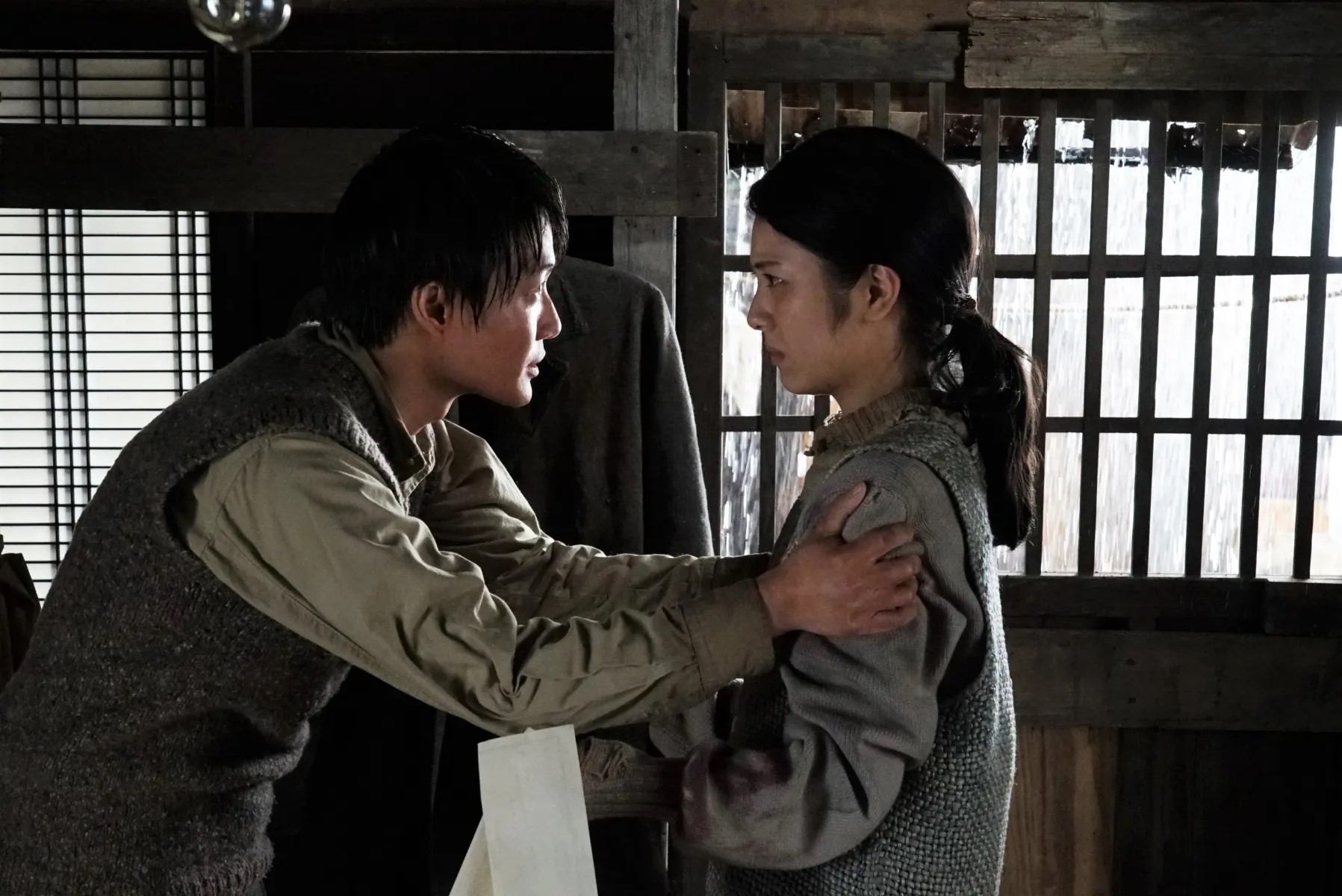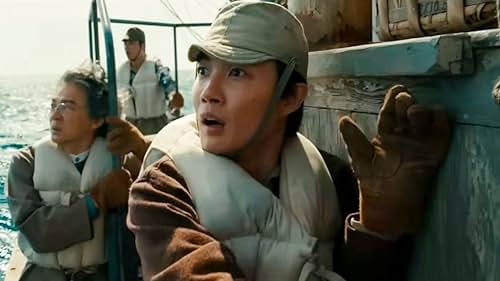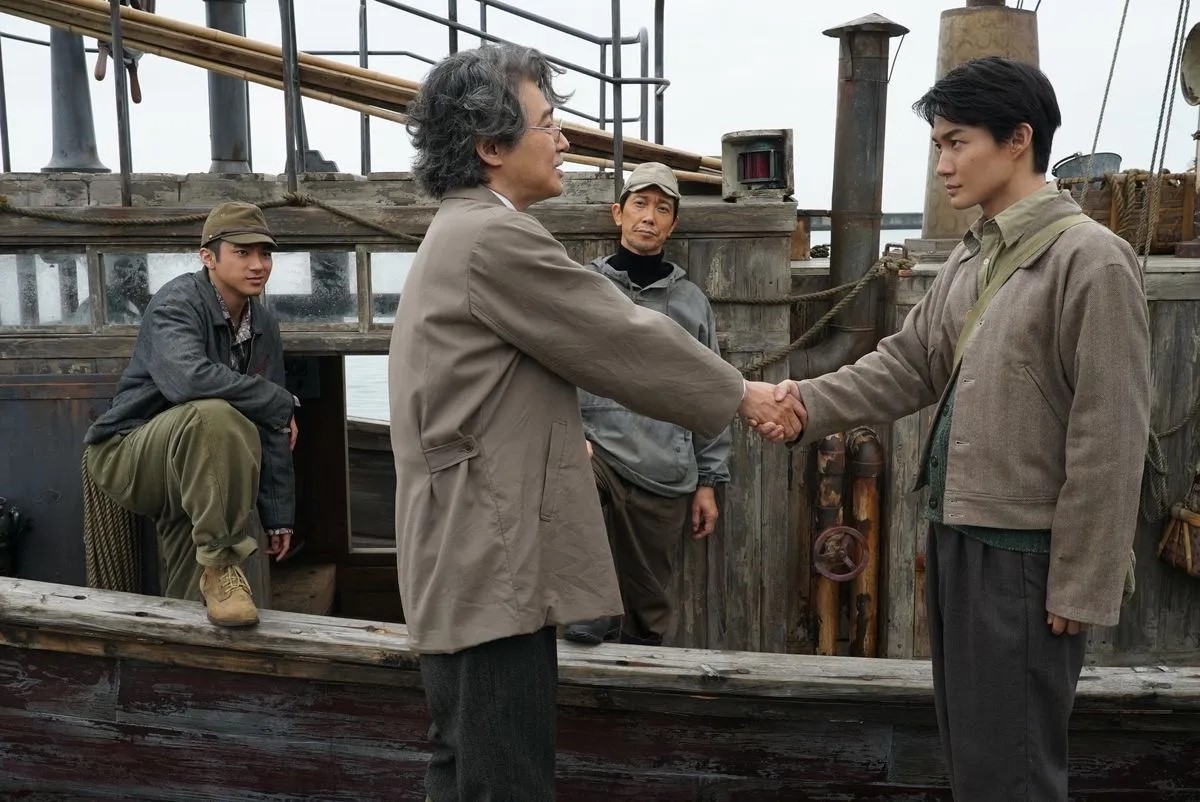Review: GODZILLA MINUS ONE
The Godzilla film franchise is the oldest in film history, beginning in 1954 and spanning some 38 films: 33 Japanese films by Toho Ltd, and five by American partners, TriStar and Legendary. Cartoons and comic books and computer games starring Godzilla are myriad.
The latest entry is GODZILLA MINUS ONE, a masterpiece of the series, and worth watching both for longtime fans of the monster, and those who have never seen such a movie before.
If you have never watched a monster movie, and have no interest in them, watch this one.

Godzilla films concern the rampages of a prehistoric seamonster woken from unknown deeps by unwise atomic bomb testing, and mutated into a titanic horror whose breath is radioactive, and whom conventional firearms cannot stop.
Like other longstanding franchises, films vary between sober and absurd, venturing at times into the campy or comical, at other times into the horrific or science fictional. Godzilla himself is variously portrayed as villain or antihero or hero, sometimes as a living natural disaster, or sometimes as a supernatural judgment against the folly of man, or sometimes as a protector of man from worse monsters.
The films are known for the exacting and obsessively detailed miniature-work by teams of special effects artists portraying cities, streets, and tanks to be trampled, power lines and rail lines, and known for the use of agile and longsuffering human stuntmen in suits to portray the various monsters. Sadly, the special effects are less convincing in some films as in others, varying as wildly as the portrayal of the monster.
The franchise is also famous for the sound effects and soundtrack: both Godzilla’s roar and Godzilla’s theme are iconic.
This latest entry is a crown jewel of the genre. It is a return to the original conception of the monster as an unfriendly disaster, and the special effects are convincing and gripping.

Remarkably for a monster film it is also a solid story well told, involving sympathetic characters portrayed with conviction and verisimilitude, clear motivations, movingly well acted, in a tale that is forthright, and by turns grim, sad, poignant, and uplifting. For all that, the plot was gripping, and who survives and who perishes is not so easy to predict. The film does not shy away from inflicting grief and hope in equal measure.
GODZILLA MINUS ONE is a historical work set in the tail-end days of World War Two, and during MacArthur’s occupation of Japan. Chronologically, it is a prequel to the original 1954 film.

Failed kamikaze pilot Koichi Shikishima (played by Ryunosuke Kamiki) feigns engine troubles during his final mission. While his squadmates die in battle, he lands on a small island repair base, whose mechanic, Tachibana penetrates the deception. That night, the island is attacked by a prehistorical creature who tramples and savages the garrison. Shikishima has the opportunity to redeem himself by firing on the monster with his aircraft guns, but is frozen with cowardice. Again he survives while braver men die around him.

Shikishima returns home to find his parents dead, his house a crater, his life desolate. Then in a ragged, crowded street amid the ruins, a fleeing young lady, Noriko, chased by calls of “stop, thief!” thrusts a burden she is holding into his arms. This is not stolen loot, but an orphaned baby. He has no milk; he cannot care for her. He puts the child down and turns away. She wails.
What happens next, for weal or woe, this review will not say.

The war survivors in the rubble must make hard choices as they painfully rebuild their lives in the midst of desolation and poverty. Shikishima can find no work except the well-paying but suicidality dangerous task of minesweeping.

He is tormented by grief and guilt, carrying family photographs recovered from the dead mechanics of Odo island he failed to protect.
Meanwhile the prehistorical creature is caught in the radius of atomic bomb test, and is mutated into the full-sized form of Godzilla. As Godzilla approaches Japan, American warships are spectacularly destroyed.

We discover the monster is imbued with the power of regeneration, hence practically indestructible. MacArthur is unwilling to escalate his forces in the area, for fear of provoking the Soviets, and so tells the undermanned, exhausted, and unarmed Japanese self-defense force that they must see to the matter on their own.
Shikishima is sent out on a wooden four-man minesweeper boat, armed only with a deck gun, to face and forestall Godzilla.
Disaster ensues.

But the postwar Japanese military is not able nor willing to counter the coming threat, nor even tell the public the truth about it. A volunteer militia, scrounging for left-over military equipment and veterans with military training, is organized to erect a desperate defense.
As is traditional in such films, an eccentric scientist has a plan to counter the monster. But Shikishima, finding an experimental warplane prepared but never flown in combat, has a plan of his own, involving a suicidal air-assault, or outright suicide. To ready the warplane requires he find and convince the surviving mechanic of Odo Island, Tachibana, whom he formerly betrayed, to trust and aid him.
Even the minor characters, such as the crew of the minesweeper, or the volunteers only briefly onstage, are distinct without being quirky or one-note, reaching deep emotion even with a single line or lingering look in the eye, and, unlike every monster-movie extra of all time, memorable. Cowardice and courage are displayed, and not always by whom one might think.

The sets and costuming are perfectly matched to the place and time of postwar Japan. Particularly pleasing to the eye is the warplane highlighted in the final battle sequence, Kyushu J7W Shinden. This is an historical prototype plane, built but never flown, meant to be land-based bomber interceptor. It is a sweet-looking craft, sleek and maneuverable, with rear-mounted wings, a nose mounted canard, a pusher prop engine.

The film is shot in a straightforward style, with special effects and stuntwork able to convince any honest film-goer of the magnitude of the monster-threat. The annoying habit of having all special effect scenes shot at night or in the rain is here not present. What is computer graphics and what is monster costume is impossible to discern: debates raging among fans come to no agreement, and the film maker has not said. It all looks good.

Tiny flourishes, like grace notes, adorn the film, as when the Nippon Theater in Ginza is destroyed while reporters look on from a nearby rooftop. The audience in this theater saw themselves destroyed the original film 1954. Later renamed the Yurakucho Marion, the theater was again destroyed in the 1984 film.
Another detail is the use of dead fish, bobbing to the surface, slain by radiation, as sign and forewarning of the coming of Godzilla from below the waves. Again, this harkens back to the original.
Unlike some monster films, the monster is seen in an early scene, fifteen minutes or so into the film, wreaking havoc and disaster, but achieves full size and city-trampling magnitude as the film progresses. The beam weapon from the monster’s mouth is displayed in a particularly impressive set up and follow through. There is nothing cheesy or cheap about the images of damage and devastation wrought by the atomic monster here.
Not a full-bore fan of Godzilla, I have nonetheless watched my share of films, and have my favorites. There are certain takes on the monster I prefer, not unlike how fans of Batman might prefer one portrayal over another, Adam West versus Christian Bale.
This portrayal of the monster is particularly well done. Godzilla here is menacing, more than natural. This is not merely a large lizard who hides behind skyscrapers when shot by helicopter gunships, but neither is this Godzilla utterly invulnerable: missiles and mines in this version are able to wound and anger it, and the monster’s wrath is apocalyptic to behold.

Unlike every monster film this monster fan has ever seen, the human characters are even more realistic and compelling than the monster.
The scenes are emotional without being overly melodramatic, and the characters enter the viewer’s heart, so we are sad when they die, are grim when they cower and fail, are ebullient when they rise to the occasion. But in each case, the audience is likely to be surprised, because, as with real people, one is never sure who will stand and who will fall.

The English title reflects the theme of the film, which ponders the postwar melancholy and failure of a nation once so intoxicated with its own military glory, seemingly unstoppable, now gnawing the bitter fruit of defeat.
Japanese films and anime tend to be cynical about the efficiency and honesty of government officers, and GODZILLA MINUS ONE is no exception. While the theme of having eccentric science come to the fore to stave off the monster is commonplace in monster films. Not so commonplace is the plot point present here of trying to organize a defense of civilian volunteers, veterans of a defeated army, or asking men who risked and lost so much during the war-years to risk such loss again. This theme is poignant and rare and well-handled. A man finds himself on his own in the disaster, and unless he helps his ailing neighbor, none will.
The theme of how to suffer war, disaster, defeat, not to mention how to deal with suicide and survivors guilt, is well-handled here.
There were strains of anti-war sentiment present, as one might expect of bitter and disappointed survivors, but also salutes to the honor and courage of those who served and sacrificed, as one might expect of teens too young to have seen action. Against that, there is also pity for those whose honor fled and failed in the face of horror.
It was not simple. The whole theme is handled with the subtlety and power of true art at its best, not at all what one would expect from a monster flick.
For example, I was not expecting a Japanese movie to criticize (but not overemphasize) the Japanese indifference to the lives of their soldiers, nor was I expecting the suicidal courage of the kamikaze pilots to be treated honestly and realistically, neither glamorized nor demonized.
We who in the West are resigned to heavy-handled moralizing from Hollywood perverts might not even recognize a thematically coherent movie that addresses deep issues without moralizing.
The scene mentioned above, where a man must decide whether or not to walk away an unnamed wailing baby he cannot feed is a striking example: in a lesser film, it would be clear what the outcome will be long beforehand. Here it is not.
Unlike other longstanding franchises, GODZILLA MINUS ONE is untouched by the social vandalism or prostitution polluting every other popular franchise one can name. The men are portrayed as men, the women as women, with the virtues and vices endemic to each sex.
Nor are there any visible leftwing “sucker-punches,” social comments, or superciliously inserted political commercials or woketastic public service announcements. Lewd and prurient accretions are absent. The moral of the story is actually moral, not immoral. This film was not made by someone who hates you.
It is a sad, sad commentary on the current state of film making in America, that the highest praise mustered for one of the best films of the year must include a triumphant announcement that hectoring wokecrap is absent.
This film heaps shame on all American filmmakers who cannot match this standard. Hollywood has been trampled by the monster.

